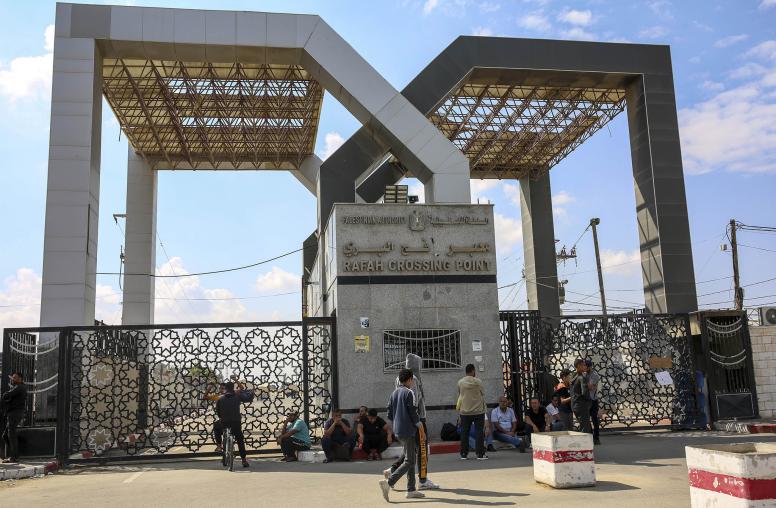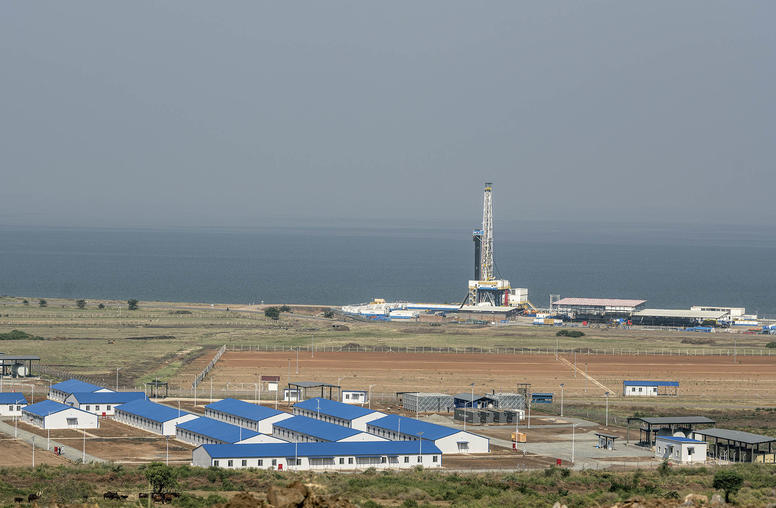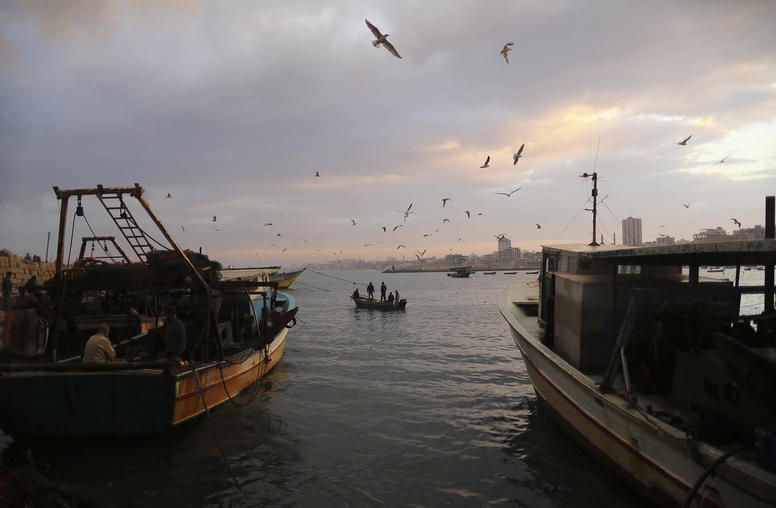Impact of Arab Uprisings
USIP’s Mona Yacoubian explores the impact of uprisings in Tunisia and Egypt on the rest of the Arab world. This "On the Issues" is based on Mona Yacoubian’s remarks at the April 15th annual conference of the Center for the Study of Islam and Democracy.
April 18, 2011
USIP’s Mona Yacoubian explores the impact of uprisings in Tunisia and Egypt on the rest of the Arab world. This "On the Issues" is based on Mona Yacoubian’s remarks at the April 15th annual conference of the Center for the Study of Islam and Democracy.
Experts from the U.S. Institute of Peace (USIP) are closely following developments throughout the Middle East and North Africa. Read more.
- How significant is the impact of popular uprisings in Tunisia and Egypt on the rest of the Arab world?
- How long will this phenomenon continue?
- What are the trajectories of change?
- Which country will have the greatest impact on prospects for democratic transition in the region?
- How significant is the impact of popular uprisings in Tunisia and Egypt on the rest of the Arab world?
How significant is the impact of popular uprisings in Tunisia and Egypt on the rest of the Arab world?
The uprisings mark a watershed event, with the Arab world irrevocably changed. Essentially, the social contract governing the relationship between Arab ruling regimes and their populations is in tatters. The contract’s fundamental precept demanded popular acquiescence to regime control—the suppression of their aspirations and muzzling of their voice—in exchange for government guarantees of decent living conditions – the provision of jobs, housing, affordable food prices, education and health care. Over the past decade, if not longer, the social contract’s foundations began to crack. Deteriorating socioeconomic conditions and a yearning for freedom across the Arab world underscored the core flaws of this arrangement. The uprisings in Egypt and Tunisia as well as popular protests across the region are the most dramatic evidence of this new Arab awakening.
No one – not even the protest organizers themselves – predicted that the demonstrations would lead to the downfall of such deeply-entrenched regimes. Western governments often believed Arab regime arguments that their governments represented stability and a bulwark against either chaos or Islamist extremism. Meanwhile, many Western analysts perhaps overestimated the strength of autocratic regimes and failed to give enough credence to the “popular” side of the Arab social contract. Riddled by pervasive corruption and unable to provide even the most basic popular needs, regimes in Tunis and Cairo were ultimately brought down by their inability to fulfill their end of the bargain. Going forward, it is essential to understand that the Arab grassroots have been empowered. They are now a key factor in the region’s power equations and can no longer be ignored. Power no longer emanates solely from the top, but also resides at the popular level.
How long will this phenomenon continue?
We are only at the beginning of a tumultuous era of change in the Arab world. The Arab popular revolts’ shock waves will continue to reverberate across the region for several months, if not years. The tragic self-immolation of the Tunisian fruit vendor Mohamed Bouazizi on December 17th recalls the notion of a “butterfly effect” –a small change in one part of complex system can have a disproportionately large effect elsewhere. This is precisely what we are watching today – the angry and desperate act of one young man in a small village in Tunisia has unleashed a wave of turmoil and unrest spanning from Libya to Oman and many places in between. These echoes of rage underscore that while every Arab country is unique, numerous factors bind them, allowing complex events in one country to resonate in others.
These events will continue to be magnified and accelerated by the growing role of social media. Indeed, the Arab Media Influence Report recently released by the Dubai-based NewsGroup notes a number of significant trends:
- There are 65 million Internet users in the Arab world and the number is expected to grow to 80 million by 2012. In percentage terms, 30.8 percent of the population is online, while the global average is 28.7 percent.
- In August 2010, Arabic became the fastest growing language on Facebook.
- There are 17 million Facebook users in the region, larger than the number of newspaper subscribers.
While by no means the only factor, social media will surely play a critical role as the dynamic change launched by the Tunisian fruit seller continues to play out across the region.
What are the trajectories of change?
While Tunisia and Egypt seemed to follow somewhat similar paths, we have seen great divergence between Libya, Bahrain, Yemen and Syria to name just a few places. These differences should come as no surprise, as they reflect the significant diversity that characterizes the region.
- Civil War in Libya: In Libya, marked by 42 years of autocratic rule (the longest of any in the region), the absence of any genuine institutions of governance, opposition parties or a vibrant civil society have become readily apparent. Initial optimism over popular unrest that began in Benghazi quickly yielded to a realization that Libyan oppositionists could not build sufficient momentum. Libya is the only case that has led to Western military intervention, with the outcome far from clear. Libya increasingly appears to be sliding into civil war, potentially allowing extreme elements to exploit the chaos for their own ends. While Western military intervention was perhaps critical to avert massive civilian casualties, it adds another complicating factor to how things will evolve in Libya.
- Brutal Suppression in Bahrain: By contrast, in Bahrain, external military intervention has occurred to help prop up the regime, rather than aiding the opposition. Saudi military support helped quash the opposition – at least for now—but exacerbated Sunni-Shia sectarian tensions. The Bahraini government is in the midst of a harsh crackdown, rolling back minor reforms and further deepening the divide between the country’s ruling Sunni minority and the Shiite majority. Moreover, the Saudi intervention has provoked a heightened “cold war” between Iran and Saudi Arabia that is resonating not only in Bahrain, but elsewhere in the region, notably Lebanon.
- Protracted Stalemate in Yemen: Yemen offers yet another model – protracted stalemate. The consensus from numerous quarters, including the United States and Saudi Arabia, is that President Ali Abdullah Saleh must leave. Yet, attempts to negotiate his departure continue to falter, with popular unrest unabated. Yemen’s opposition and the government forces are at an impasse given the president’s staunch refusal to step down. Failing a successful mediation, Yemen could find itself embroiled in a dangerous standoff. Prior to the unrest, the Saleh regime’s foundations were already rocked by a three-pronged challenge – the Houthi rebellion in the North, the southern secessionist movement and continuing threats by Al-Qaeda in the Arabian Peninsula.
- Gathering revolution in Syria: At the outset of the Arab uprisings, Syria seemed the least likely candidate for revolutionary change. However, Syria has been roiled by unprecedented popular protests across numerous cities including Damascus and Aleppo. The Syrian regime has responded with an ineffective combination of brutal repression, leaving more than 200 dead, and superficial reform measures. As a result, the unrest appears to be gathering momentum as the geographic scope, ethno-sectarian make-up, and scale of the demonstrations expands. In his latest concession, President Assad has vowed to lift Syria’s nearly 50-year long state of emergency among other measures. Yet, his announcement has failed to assuage popular anger as protests continue. Should Syria’s powerful Sunni merchant class in Damascus and Aleppo join the protests, this move would constitute a critical tipping point in favor of the demonstrators. While by no means “game over” for President Bashar al-Assad, the demonstrations’ gathering momentum suggests the possibility of significant change in Syria.
Which country will have the greatest impact on prospects for democratic transition in the region?
Having regained its position as a trend-shaper in the Arab world, Egypt will be of critical importance to the region’s future. Egypt’s path – whether toward successful democratic transition or a regression toward renewed authoritarianism—will necessarily have a disproportionate impact on how the rest of the region fares. Success in Egypt would provide a blueprint for the Arab world as various countries struggle to end decades of autocratic rule. By the same token, Egypt’s nascent revolution could yet be overtaken by anti-democratic forces seeking to return Egypt to the status quo ante. This turn of events would have an exceptionally deleterious impact on the prospects for successful democratic transitions elsewhere in the region.
Numerous issues have emerged during Egypt’s transitional period: the timetable for elections, the military’s post-revolution human rights abuses, calls for prosecution of former President Hosni Mubarak and others. These developments underscore the numerous challenges that Egypt faces as it attempts a democratic transition. The detention of former President Mubarak and his two sons has started to appease demands for justice and accountability but also underscores Egypt’s need to establish a formal transitional justice process. In addition, mounting concerns over military human rights abuses underlines that Egypt’s democratic transition is far from complete. Egypt will remain a critical arena for change. It will either serve as a successful model of peaceful, democratic change that inspires peaceful transitions elsewhere or as a cautionary tale where counter-revolutionary forces obstruct genuine change, restoring authoritarianism. It is still too soon to know.



